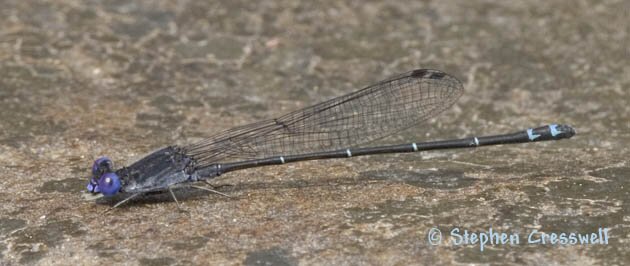

Family: Coenagrionidae
Length: 32-38 mm
From Ontario to Argentina, and throughout West Virginia, this attractive damselfly can be found along rivers and creeks. It is occasionally seen at large lakes, but seldom at ponds. Mature males are quickly and easily recognized by distinctive blue markings on the rear of the abdomenmost easily seen in profile.
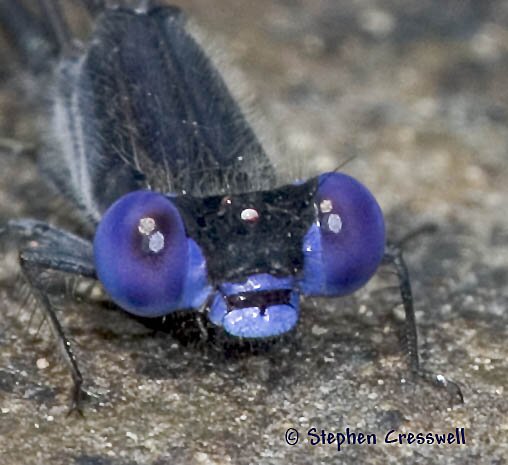 Female dancers are a tough group to separate to species, but here too a certain pattern on the abdomen, seen in profile, will help clinch the I.D. (see images below).
Female dancers are a tough group to separate to species, but here too a certain pattern on the abdomen, seen in profile, will help clinch the I.D. (see images below).
West Virginia collection records are widespread for this species, stretching from the southernmost counties to both panhandles. It may occur in every county in the state.
Unlike many of their damselfly relatives, Dusky Dancers eschew vegetation when selecting a perch, preferring rocks, logs, or the ground itself.
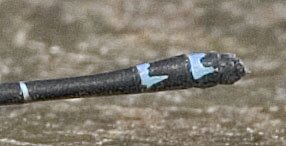
|
| Above: The tip of the abdomen of a male Dusky Dancerno other species has marks like these. |
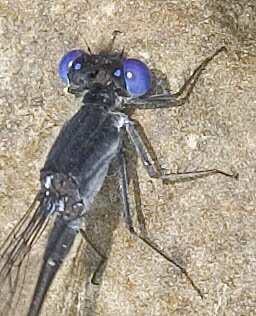 |
| Few markings and small eyespots characterize this view of the mature male Dusky Dancer. |
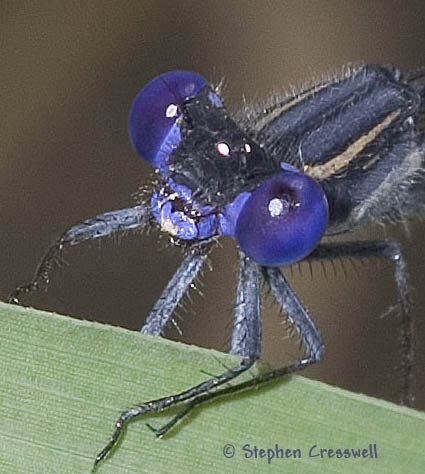 |
| Printed field guides say immature males have pale shoulder stripes. This fellow has the stripes, but he was not particularly immaturehe was in tandem with a female at the time the photo was taken. |
 |
| Above: As with many other Dancer species, the females of the Dusky Dancers are predominantly brown and black. On Dusky Dancers in particular, a broad black shoulder stripe is divided in two by a slender wedge of brown. |
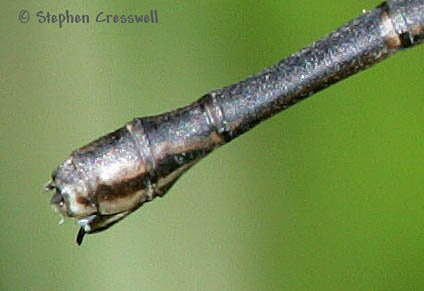 |
| Above: Female Dusky Dancers have some contrasting horizontal stripes on abdominal segments eight, nine, and ten. |
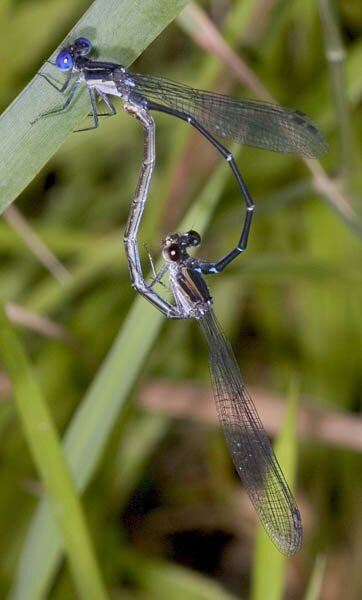
|
| Dusky Dancer male and female in the wheel position. |
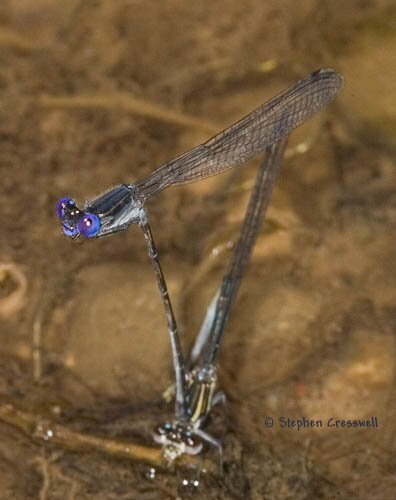 |
|
|


